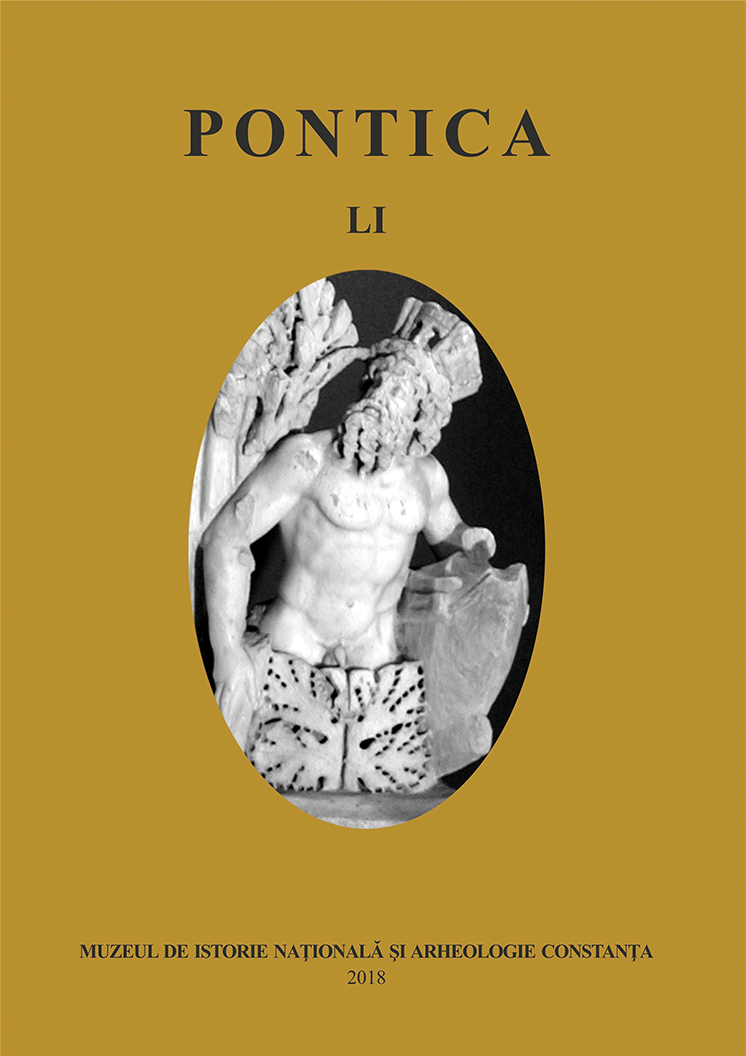Un grup monetar din vremea lui Constantius II (337-361) descoperit în zona suburbană a Tomisului
A Monetary Group from the Time of Constantius II (337-361) Discovered in Tomis' Suburban Area
Author(s): Dan VASILESCUSubject(s): Anthropology, Archaeology, Economic history, Local History / Microhistory, Ancient World
Published by: Muzeul de Istorie Națională și Arheologie Constanța
Keywords: Constanța; monetary group; Constantius II; archaeological context;
Summary/Abstract: The discovery was occasioned by the construction of a building in Km 5 area of Constanța, an urban archaeological zone. The archaeological research, carried out in the first half of 2018, revealed the existence of remains from Hellenistic (4th-3rd century BC) and Early Roman (2nd-3rd century AD) periods. The Late Roman period (4th century AD) is poorly represented and only by metal objects. The monetary group consists of 22 bronze pieces (billon), dated in the period of 351-361 AD. It comes from the top filling of a ditch that functioned during the 2nd and 3rd centuries AD and it gives a terminus ante quem for its disuse. The coins were not found together, but scattered over an area of around 2.50 square metres, being recovered from depths between -0.45 and -1.05 metres. The group is composed of three conventional denominations: AE2 reduced (three coins) and AE3 (14 coins) of FEL TEMP REPARATIO (FH) type and AE3 reduced (five coins) of SPES REIPVBLICE type. The coins were struck at the mints of Aquileia, Siscia (with one piece each), Sirmium, Nicomedia, Cyzicus (with two pieces each), Heraclea (with three pieces) and Constantinople (eight pieces). The discovery is most likely a currency „hoard” and provides a relevant picture of the small change used in Scythia province at the end of Constantius II’s reign.
Journal: Pontica
- Issue Year: 2018
- Issue No: 51
- Page Range: 593-608
- Page Count: 16
- Language: Romanian

